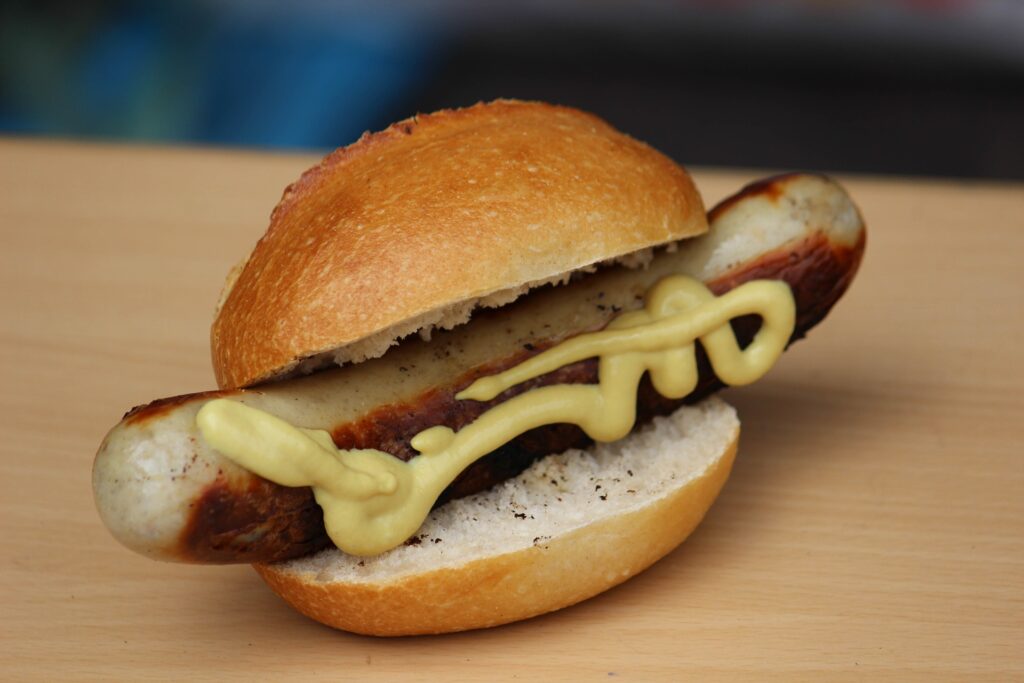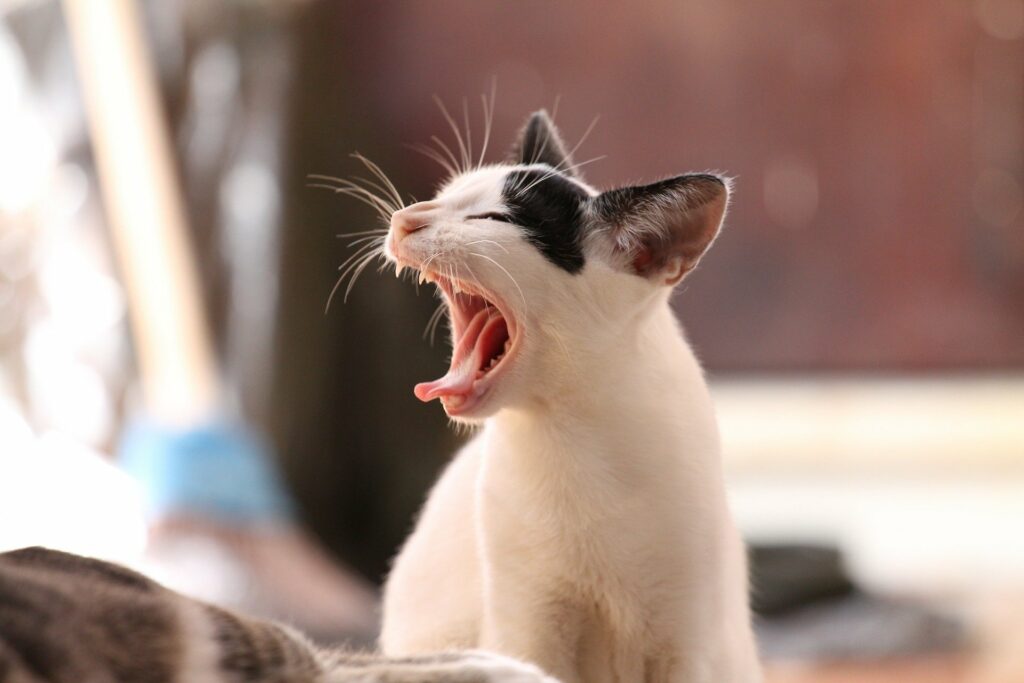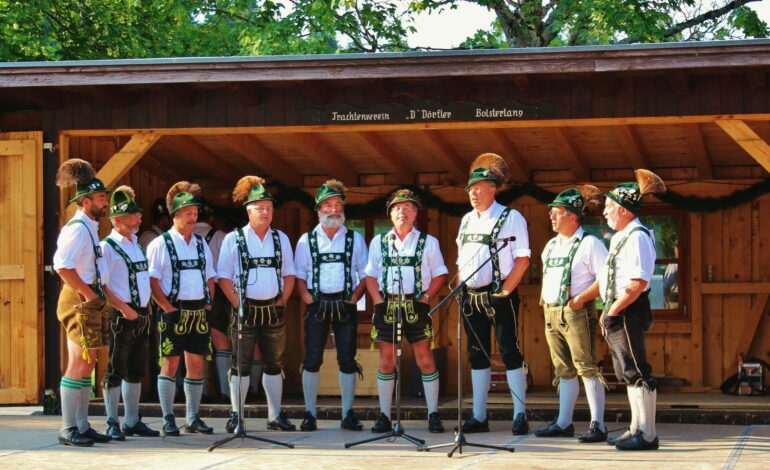Vanilla or tutti frutti? Is advertising in Germany just plain boring…?
One of the many fun things about visiting another country is watching TV advertisements. It always fascinates me how they vary from country to country and what they tell us about consumer behaviour and cultural mindsets. When I visited Germany as a school student back in the 1990s, I loved watching and hearing advertisements on the TV and radio. Advertising in Germany was different to what I was used to and singing along to jingles such as “Knorr, Essen mit Lust und Liebe!” and “Haribo macht Kinder froh und Erwachsene ebenso!” played a part in helping me to learn the German language and understand the culture.
The Haribo jingle, which was first aired in Germany in the 1960s, can now be heard in English as “Kids and grown-ups love it so, the happy world of Haribo!” Long before it made its way to English-speaking realms, I remember being highly amused by my exchange partner’s alternative version which went “Katzenklo macht Katzen froh!” This translates literally as “cat litter trays make cats happy.” Hilarious! Don’t judge me… remember TikTok hadn’t been invented yet.
Busting stereotypes
I have become aware through my translation work that German advertising has earned the reputation of being boring, particularly compared to American advertising, which is generally perceived to be flashier, funnier and more innovative. This might have something to do with the stereotypes that are associated with Germans, such as their orderliness and precision compared to their “free-spirited” American cousins.
The somewhat dated yet still iconic “Unmistakeably German” advertisement by Citroën sums up this stereotypical view of Germans very well.

Now, we all know that stereotypes are unfair and inaccurate. That’s whI’ve done some digging to find out more about the advertising styles in the USA and Germany and to confirm if German advertising really is as dull as ditchwater.
Money, money, money
According to a 2019 report by Düsseldorf Trade & Invest, American companies spend 38% of their total budgets on marketing, while German companies spend less than half of that. This gives us the first clue why German advertising may not be able to push the boundaries of innovation and creativity as much as American advertisers, who have huge budgets to spend in comparison.
Heads versus hearts
In addition to budgets, there are other factors that influence the advertising styles of each country. In broad terms, German consumers tend to make decisions with their heads, while American consumers look to their hearts. This is why German ads often include lots of facts and figures that help the consumer to make wise and rational decisions, while American ads appeal to the emotions.
Food ads in Germany, for instance, often prioritise key information about nutritional benefits or other certifications that attest to the quality of the products rather than the taste experience. For example, German beer manufacturers often highlight the “Reinheitsgebot” (Purity Law) to demonstrate the quality of the beer. Other food manufacturers like to point out the rating they have achieved from the hallowed consumer organisation, Stiftung Warentest.
By contrast, American ads often focus on how the product makes the consumer feel on an emotional or sensory level. This selection of the 25 best food ads in 2021 gives us a little taste. For example, the slogan on an English ad for Nutella is written in the chocolatey spread and states “Please do not lick the page”. In doing so, it is asking the viewer to imagine how the product tastes and feels rather than think about its specific ingredients or other more tangible qualities.
Quality reassurance
According to a thesis on German advertising by Yannick Kluch, avoidance of uncertainty is very important for German consumers, which helps to explain why many ads made for this region feature so many facts, certifications and expert testimonials. Predictability is an important part of this. For example, the slogan for a popular washing detergent is “Da weiss man, was man hat”, which roughly translates as “You know what you’re getting.” It highlights how much German consumers like products that are familiar and that will offer a guaranteed level of quality.

The same brand uses a very different slogan in English-speaking domains: “Dirt is good”. The aim of this slogan is not to reassure the customer about the quality of the product but to get a conversation going and create a sense of intrigue.
Tradition personified
If “Qualität” is one of the most often used words in German advertising, then it is closely followed by “Tradition.” The idea that a company has been around a long time and is steeped in tradition provides the German consumers with the reassurance they crave. Companies that go back hundreds of years, such as Pelikan (stationery), Meindl (walking boots) and Villeroy & Boch (ceramics), will take every opportunity to point out their long and noble histories to demonstrate quality and expertise.
The German coffee brand Tchibo even personified these concepts of tradition and wisdom in the form of the Tchibo Man who appeared in ads in Germany in the 1960s and 70s. He is presented as a coffee expert who travels the world in pursuit of the finest coffee beans.
Whilst some American advertising does look back on the past, this tends to be used to evoke feelings of nostalgia and sentimentality rather than to make a product appear credible and trustworthy. As a rule, American advertising mirrors a culture that is constantly looking forward, so much of its advertising highlights newness and innovation instead of the idea of tradition.
Superlatively superlative
Another key difference between German and American advertising is the use of hyperbole. American advertising tends to be bolder and more emphatic with its use of phrases such as “most unique”, “world’s best” and “the very ultimate.” The “Best a man can get” slogan for the well-known razor brand Gillette illustrates this well, while Budweiser confidently calls itself the “King of Beer” and Coors boasts that it is “The World’s Most Refreshing Beer.” German companies tend to take a more understated and modest approach by comparison.
Home and away
According to Yannick Kluch’s thesis, American advertising is generally more inward-looking while German advertisers like to draw inspiration from the wider world. The American flag can often be seen in American ads to symbolize strength and national pride. American brands such as Levi’s, Ford, Jack Daniels and Coca Cola often feature the American flag or other symbols such as the bald eagle, the Rocky Mountains or cowboys in their advertising.
By contrast, German advertisers are unlikely to focus on symbols of national pride because most Germans have mixed and complex feelings about patriotism. This is why most Germans do not celebrate German Unity Day on 3rd of October in the same way that Americans celebrate Independence Day on 4th of July.
Instead of focusing on Germany itself, German advertising tends to have a more international outlook and will often draw on themes such as travel and adventure in distant lands. This is well illustrated in the slogan of the German beer brand Erdinger Weissbier “In Bayern daheim, in der Welt zuhause” (At home in Bavaria and across the world) and visually through the emblem of Beck’s beer, a sailing ship which is usually pictured gliding over the waves on the open sea.
Vorsprung durch creativity
So, the evidence so far tells us that German advertising tends to be more fact-driven, tradition-focused, outward-looking and restrained than its American counterpart. The German desire for information to avoid uncertainty is perhaps why it has been difficult to produce creative and innovative ads in this region.
However, my research tells me that this only applies to a certain degree. I have actually found plenty of evidence to suggest that German advertising can be just as creative and innovative as its American equivalent, despite the smaller budgets.
According to Yannick Kluch’s report, there was a shift in the advertising landscape in Germany at the start of the 2000s. This is when German advertising started to become more modern, diverse and creative, and the idea of using storytelling, emotion and other tricks started to catch on.
Once upon a time…
Many modern German advertisers make very clever use of storytelling to grab attention and to connect with their audiences on an emotional level. A very good example is the 2020 Christmas campaign by the pharmaceuticals company DocMoris, which took social media by storm across the world.
Accompanied by an emotional soundtrack, the ad shows an old man getting up early every day in the weeks leading up to Christmas to get into shape. He is shown dragging out his rusty old dumbbell from the garden shed to tone his ageing muscles. His neighbours and daughter think that he has gone completely mad. But it all becomes clear in the final scene when he visits his family for the Christmas festivities.
We watch the old man hand his 5-year-old granddaughter a gift box with a glittering star inside. He then takes a deep breath and sweeps her up in his newly muscled arms so she can place the star on top of the tree. The ad finishes with the slogan: “So that you can take care of what really matters in life.” I defy anyone not to get choked up by this tender scene – it gets me every time I watch it. If you need evidence that German advertising is creative and emotionally charged, then this is it.
Super wicked
Mark Twain once said that “A German joke is no laughing matter” which may have contributed to the unfortunate stereotype about Germans lacking a sense of humour. But you only have to look at a few examples of German advertising to know this isn’t true. There are many German ads that are gloriously funny, whacky and entertaining.
A particularly striking example is the “Supergeil” advert by the supermarket chain Edeka , which became a viral hit. It features the musician Friedrich Liechtenstein slow rapping about how “supergeil” (literally “super wicked”) supermarket purchases can be. He is shown dancing in the supermarket aisles with supermodels, bathing in milk fully clothed and smoking a hot dog like a cigar. It’s a deliciously amusing and ironic ad.
Another brilliant example is a VW Leasing ad featuring fully grown-up humans pretending to be cats and getting up to a range of feline antics, including hissing at their own reflections and coughing up fur balls.

Some of the funniest and cleverest German ads I have seen are by the DIY chain Hornbach. Their spring 2022 TV ad features a pile of garden rubbish joyriding through the neighbourhood and causing havoc like teenage gangsters and ends with the tagline “Come to Hornbach before your garden does.”
Ach Jochen!
German advertisers are also not afraid to use sex for comic effect. An advert by the electronics retailer MediaMarkt presents itself as the antidote to modern life by depicting a series of frustrating and embarrassing situations, including a naked yoga session.
What’s more, German advertising is also far from conservative when it comes to swearing. For example, one of Smart Car’s slogans is “F**ing relaxed in the city” and the City of Berlin wasn’t afraid to use shock tactics to get people to comply with mask rules during the pandemic. This translates loosely as “We’re showing the middle finger to anyone who isn’t wearing a mask.”
Innovation is the name of the game
If you think German advertising is not very innovative, then think again. I have found plenty of ingenious campaigns and advertising stunts that show Germany is among the pioneers in future-forward advertising.
For example, the brewery company Astra uses the latest facial recognition technology to create personalised ads. The video ads, which target female beer drinkers, change according to who is viewing them. If a man or underage drinker approaches the billboard, they are told in a comical way that the ad is not for them.
The soft drink brand Powerade also created interactive “workout” billboards in the form of a rotating climbing wall to encourage audience engagement.
But for me, the best example of innovative German advertising is the edible hemp tickets in Berlin Transport’s 2021 Christmas campaign. The tickets are infused with hemp oil to help passengers combat pre-Christmas stress. This is an ingenious idea that taps into the wellness trend in an innovative and witty way.
A rainbow of flavours
I started my investigation of German advertising thinking that it was as bland as vanilla ice cream compared to the fun and flashiness of American advertising, but it appears I was wrong. Even though German advertisers sometimes aim to appeal to the consumer’s desire for predictability and credibility, there are many examples that show German advertising can be just as entertaining, emotional and inventive.
Whilst a cursory look at a country’s advertising can tell us something about cultural attitudes, it is never a good idea to generalise. Not all American advertising is exciting and humorous and not all German advertising is traditional and serious. So, it’s not a matter of having to choose between vanilla and tutti frutti – there’s a rainbow of flavours to choose from no matter where you are.

